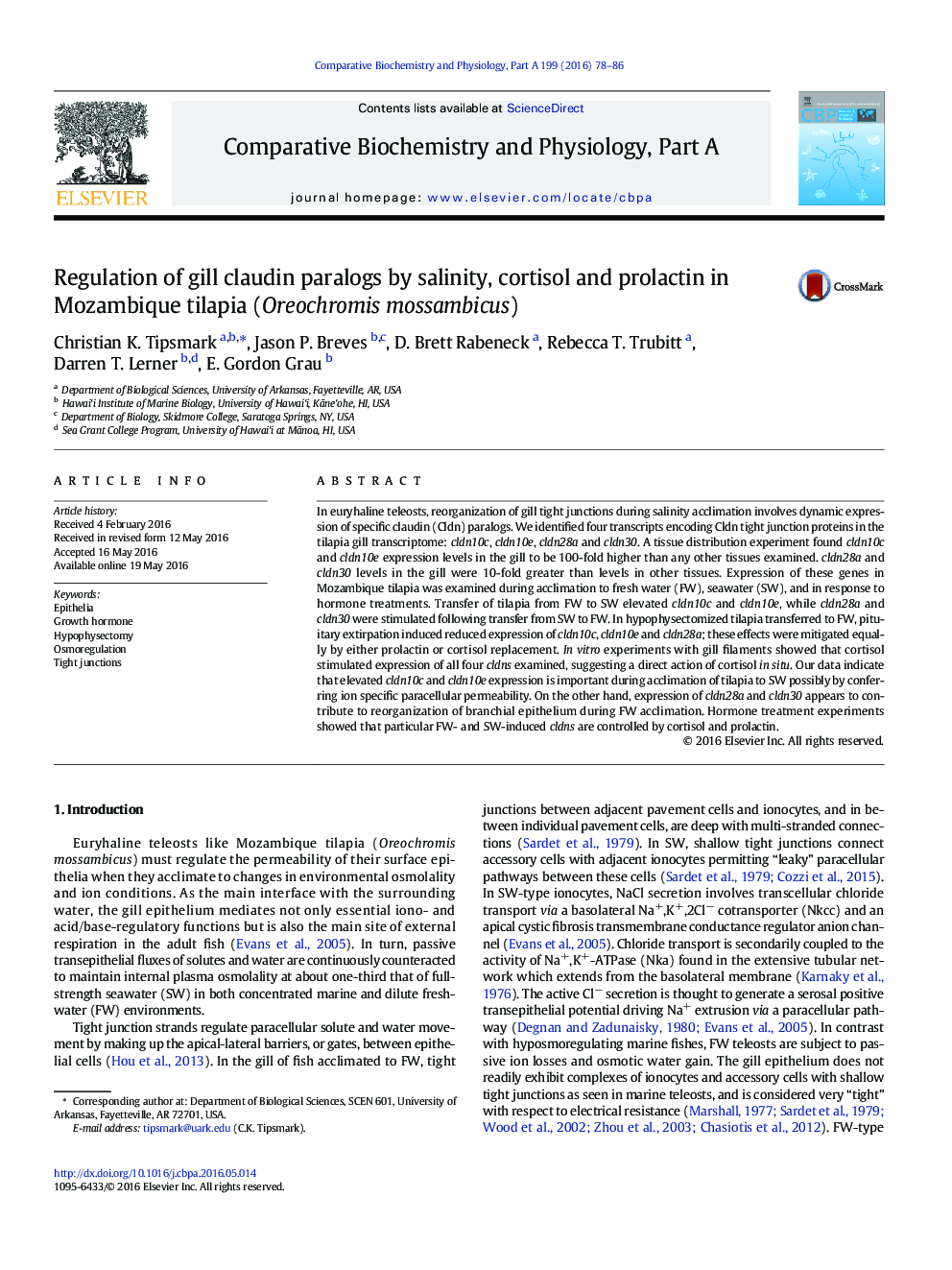| Article ID | Journal | Published Year | Pages | File Type |
|---|---|---|---|---|
| 1971806 | Comparative Biochemistry and Physiology Part A: Molecular & Integrative Physiology | 2016 | 9 Pages |
In euryhaline teleosts, reorganization of gill tight junctions during salinity acclimation involves dynamic expression of specific claudin (Cldn) paralogs. We identified four transcripts encoding Cldn tight junction proteins in the tilapia gill transcriptome: cldn10c, cldn10e, cldn28a and cldn30. A tissue distribution experiment found cldn10c and cldn10e expression levels in the gill to be 100-fold higher than any other tissues examined. cldn28a and cldn30 levels in the gill were 10-fold greater than levels in other tissues. Expression of these genes in Mozambique tilapia was examined during acclimation to fresh water (FW), seawater (SW), and in response to hormone treatments. Transfer of tilapia from FW to SW elevated cldn10c and cldn10e, while cldn28a and cldn30 were stimulated following transfer from SW to FW. In hypophysectomized tilapia transferred to FW, pituitary extirpation induced reduced expression of cldn10c, cldn10e and cldn28a; these effects were mitigated equally by either prolactin or cortisol replacement. In vitro experiments with gill filaments showed that cortisol stimulated expression of all four cldns examined, suggesting a direct action of cortisol in situ. Our data indicate that elevated cldn10c and cldn10e expression is important during acclimation of tilapia to SW possibly by conferring ion specific paracellular permeability. On the other hand, expression of cldn28a and cldn30 appears to contribute to reorganization of branchial epithelium during FW acclimation. Hormone treatment experiments showed that particular FW- and SW-induced cldns are controlled by cortisol and prolactin.
